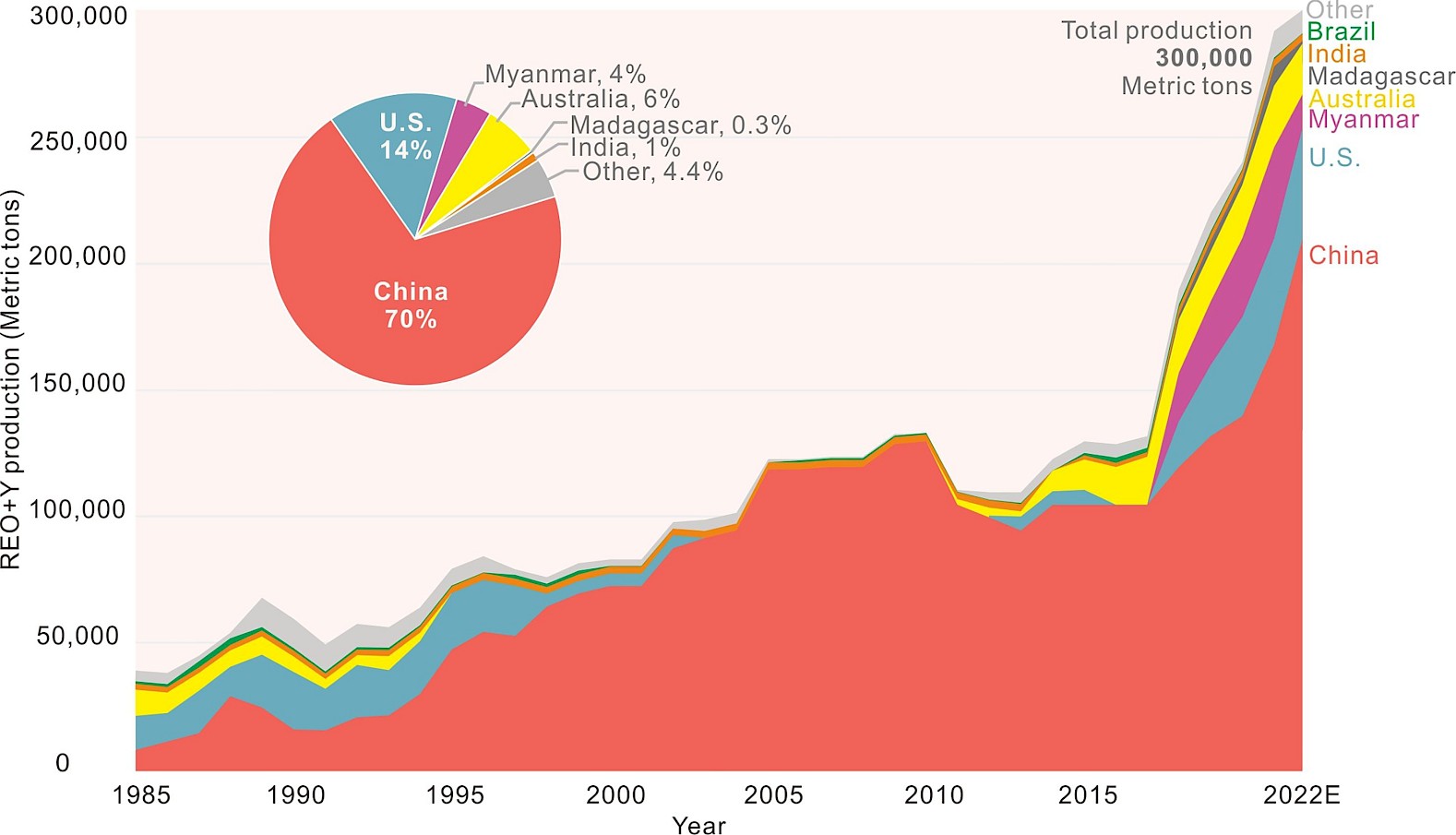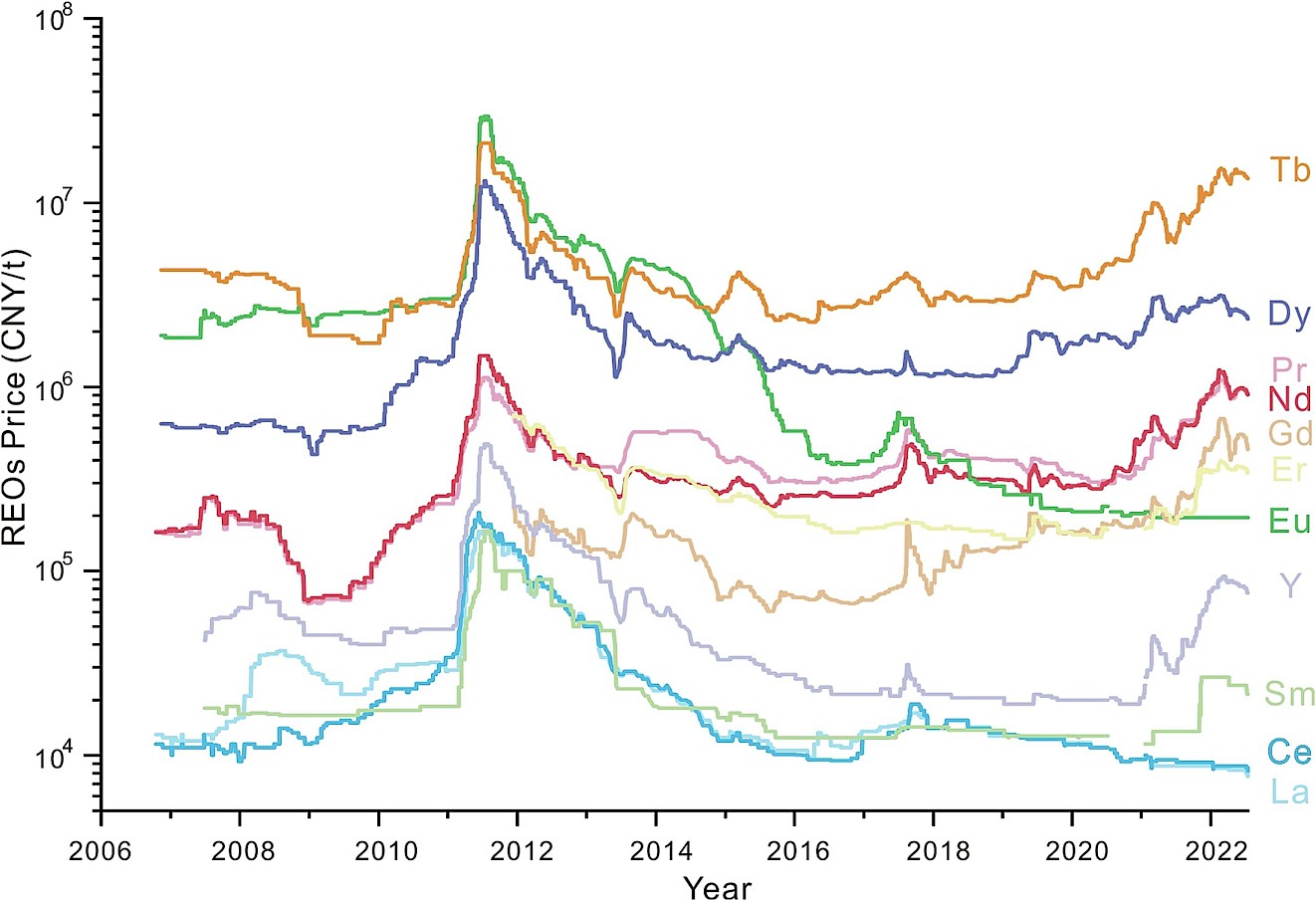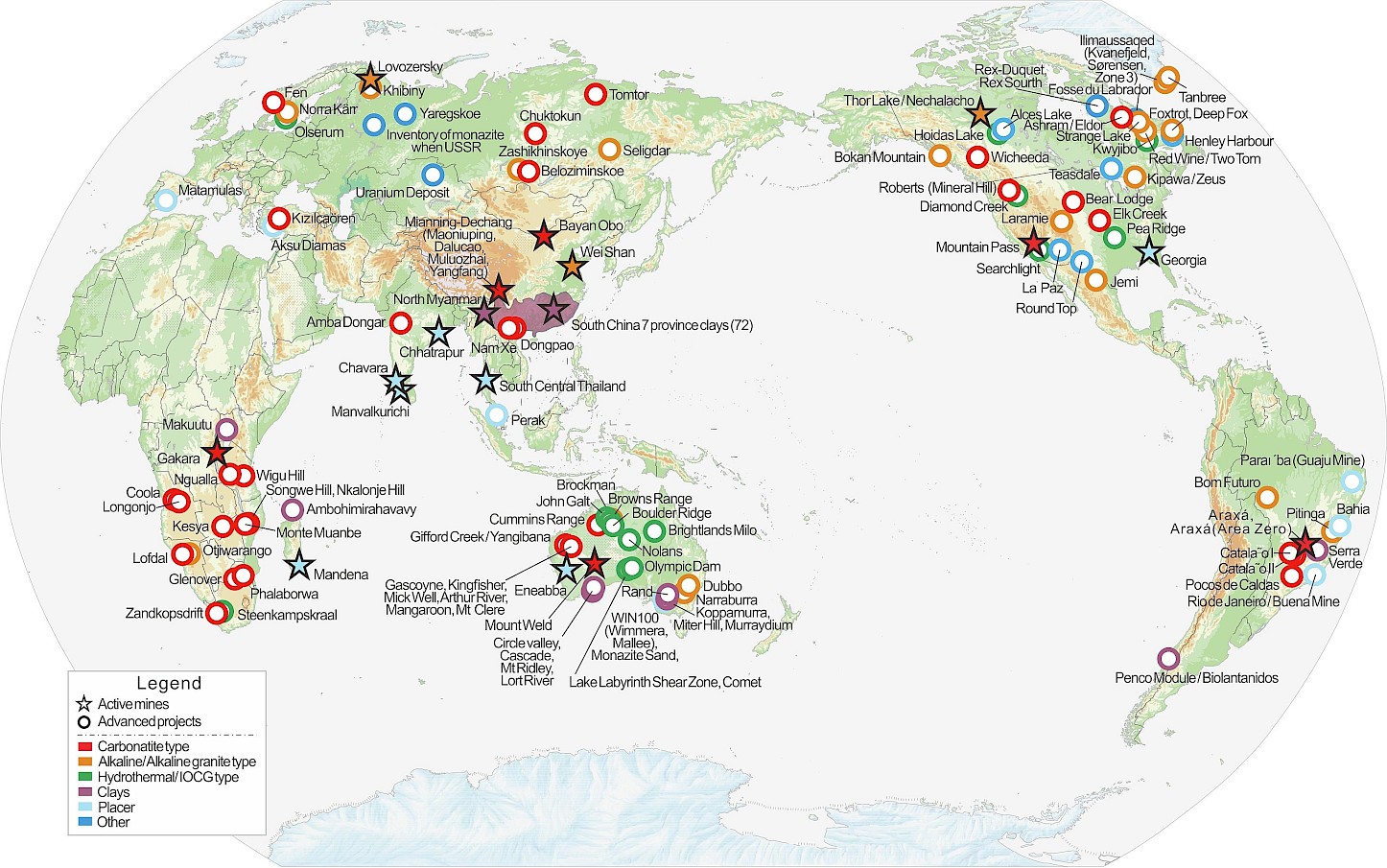Rare Earth Elements 101
BACKGROUND
Rare-earth elements (REEs) find widespread application in various high-tech devices, such as smartphones, digital cameras, computer hard drives, fluorescent and LED lights, flat-screen TVs, computer monitors, and electronic displays. Some REEs are also integral to clean energy and defense technologies.
In the realm of illumination, screens, and glass:
Certain REEs are employed either individually or in combinations to create phosphors, which emit light for diverse types of display screens, ranging from smartphone displays to large stadium scoreboards. Additionally, some REEs play a role in fluorescent and LED lighting. Notably, yttrium, europium, and terbium phosphors are responsible for the red, green, and blue hues in many light sources, panels, and televisions. Within the glass industry, REEs are a crucial resource, used for glass polishing and as additives to impart specific colors and optical characteristics. Lanthanum, for instance, accounts for up to 50 percent of digital camera lenses, including those used in cell phone cameras.
In catalysts:
Lanthanum-based catalysts contribute to the refinement of petroleum, while cerium-based catalysts are vital components of automotive catalytic converters.
In the world of magnets:
Magnets incorporating REEs have seen significant growth in their applications. Neodymium-iron-boron magnets, recognized as the most potent magnets available, prove invaluable when space and weight constraints are paramount. Rare-earth magnets are employed in computer hard drives, CD-ROM and DVD disk drives, providing stability to the spinning motion of the disk drive spindle. These magnets also play key roles in numerous conventional automotive systems, including power steering, electric windows, power seats, and audio speakers.
Within the electric vehicles and e- battery realm:Lanthanum-based alloys are utilized as anodes in nickel-metal hydride batteries. These batteries, particularly in hybrid electric vehicles, contain notable quantities of lanthanum, with some vehicles requiring as much as 10 to 15 kilograms of lanthanum per electric car.
In the production of steel alloys:
Cerium, lanthanum, neodymium, and praseodymium, typically in the form of a mixed oxide called mischmetal, are integral to steel manufacturing. They aid in impurity removal and the creation of specialized alloys.
SUPPLY
Rare earth elements resources production, consumption, and processing activities are significantly uneven around the world. Global production of REOs (210,000 of 300,000 tons in 2022) is dominated by China (70%), followed by U.S. (14%), and Australia (4%) (Fig. 1; USGS, 2023). China also has a dominant share of global REOs processing (∼85%), succeeded only by Malaysia and Estonia (IEA (International Energy Agency), 2022). China is also the largest consumer (∼150,000 tons of apparent consumption of REOs in 2020), followed by Japan, U.S., and EU28. Projected demand but limited supply for permanent magnets suggest Pr, Nd, Tb, and Dy will result in high prices, whereas La and Ce, mainly used in catalyst industries, likely have steady or declined prices over time due to oversupply

Aboves are Global mine production of rare earth oxides (containing Y; 1985–2022) by country. The up-left corner inset is the production percentage by country in 2022. 2022E is the estimated value. Production data from USGS (1994–2023) and Bureau of Mines Minerals Yearbook (1985–1993).
Chart 2

Shanghai Metals Market prices of REOs: October of 2006 – July of 2022 (From Wind; https://www.wind.com.cn/).
This database provides insight into the existence of 146 ongoing advanced-stage projects related to rare-earth elements (REEs) worldwide. These projects encompass both advanced development projects and active mining operations and involve the participation of at least 84 different companies in collaboration with various governments. These endeavors are associated with a total of 124 deposits, collectively holding more than 303.4 million tons of rare-earth oxides (REOs).
These REE resources are primarily found in five distinct types of deposits, namely carbonatite, alkaline rock/alkaline granite, ionic clays, IOCG/hydrothermal, and placer. At present, four of these types (carbonatite, alkaline rock, ionic clays, and placer) are undergoing commercial development, with carbonatite projects and deposits taking the lead in active production.
https://www.sciencedirect.com/science/article/pii/S0169136823001439#b0095

